Interactive Garden Map
Majestically surrounding the house, over one mile of yew hedging divides the Garden into a series of ‘rooms’, each with its own season and colour. Wander further afield and visit the Arboretum, Trout Lakes, Lake Park and Lancup Well. At around 50 acres they make Penshurst Place and Gardens one of Britain’s most alluring and seductive spectacles, throughout the year.
Apologises but unfortunately the interactive map is unavailable on this device. Please see the static map of Penshurst Place below.
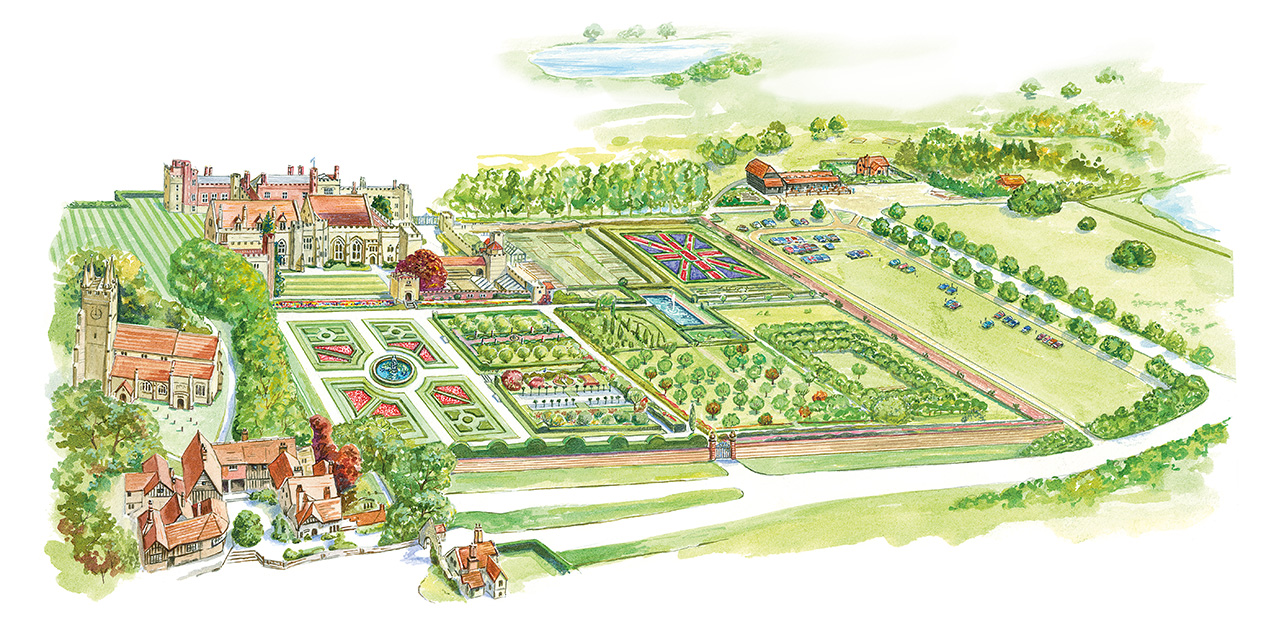
Things to see in the Gardens and Grounds
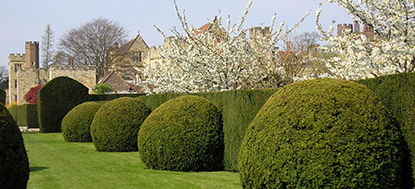
Globe Vista
Linking Diana’s Bath to the Demi Lune, large globes of Irish yew sit on either side providing a catwalk of green for visitors to enjoy.
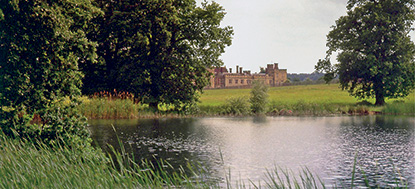
Lancup Well
Here, a semi-circle of clipped yew columns frame the watered area of Lancup Well. The planting and network of mown paths have been laid out to the original 18th century plans. Although located a fair distance from the House, the lay of the land allows for some of the best views of Penshurst Place and is a haven for wildlife.
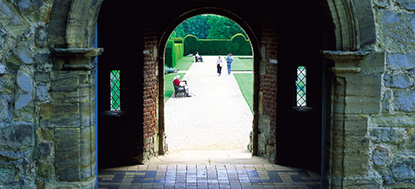
Garden Tower
In 1392 Sir John Devereux, owner of Penshurst Place, received a license to crenellate the House and build towers to surround it. Today only one of these towers survives relatively intact: the isolated Garden Tower. The tower houses information on the history of the Gardens.
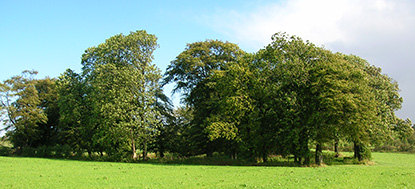
Lake Park
Open the gate situated to the left of the Lime Walk and Picnic Area, and meander towards Lancup Well, part of the original Tudor drainage system for the House.
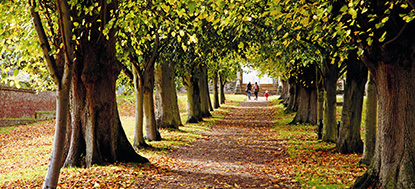
Limewalk
An avenue of large-leaved lime trees loosely connecting the Visitor Entrance and the House.
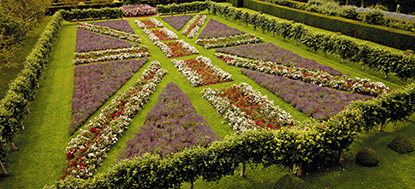
Union Flag Garden
Formed from roses and lavender, the Flag Garden was opened by the Prince of Wales to mark the 400th Anniversary of Sir Philip Sidney's death in 1984. Covered from early summer with roses, a raised mound gives a splendid view for visitors.
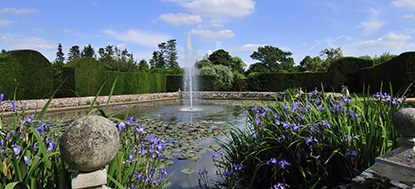
Diana's Bath
It is not known who named it or why, but Diana's Bath was formed from an old mediaeval stock pond. Parapet walls were built around this in the16th century with steps added which descend into the water, often filled with lilies of all colours.

Demi Lune
The Demi Lune is a small pond at the end of the Globe Vista. Behind it stands the Archer Sundial, created by Robert Rattray in celebration of the centenary of the birth of William Sidney, 1st Viscount De L'Isle, and framed by Pyracantha coccinea 'Red Colum'. Two topiary heralds, the bear and the porcupine, stand watch either side.
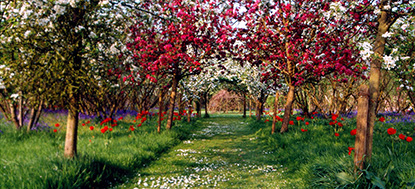
Nut Garden & Trellis
A Nut Garden of Kentish cobs, designed by John Codrington in the 1970s. A succession of spring flowers including snowdrops, daffodils and tulips, as well as primroses, bluebells and cowslips and other wild flowers bloom in the rough grass throughout the spring.
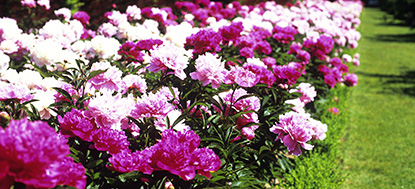
Peony Border
The famous Peony border is a magnificent 100 metre bed of pink peonies, normally flowering from late May to early June. They are mainly Chinese herbaceous Peony lactiflora: “Mons. Jules Elie”, “Albert Crousse”, “Lady Alexander Duff” and “Sarah Berdhardt”. Make sure you take the time to have a smell of their remarkable perfume too! If you don't want to miss the Peonies then sign up to receive our 'Peony Alert' newsletter.
Sign up to Peony Alert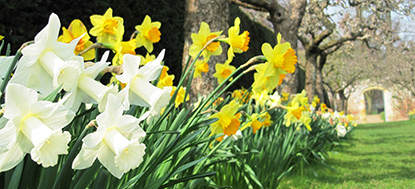
Coronation Walk
Named after the Queen’s Coronation in 1953, this part of the Garden is lined with apple trees and with an underplanting of daffodils in Spring.
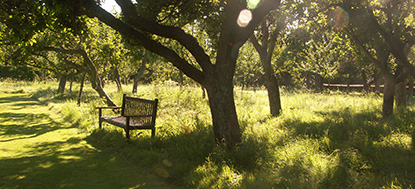
The Orchard
Apple trees are pruned in an umbrella shape, a tradition started in 1940 for optimum cropping and picking. In spring thousands of daffodils and other spring bulbs bloom beneath.
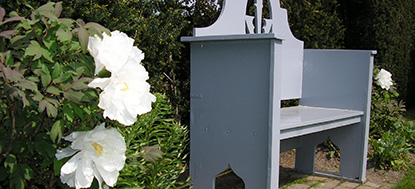
Grey & White Garden
Grey is the predominant shade in this 'room's' mix of white, grey and silver. This Garden was also designed by John Codrington in the 1970s, using plants chosen for their drought-resistant qualities which can cope with water shortages on the estate.
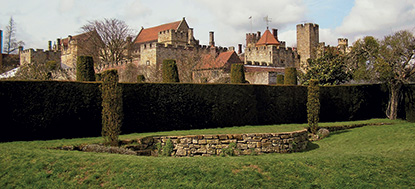
Stage Garden
Used for occasional productions and by generations of small children to sing and perform to their parents.
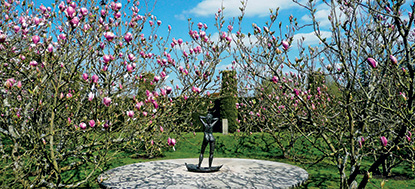
Magnolia Garden
A small garden with a sunken area from old glasshouses, used to plant several varieties of magnolia that flower in early spring. In the centre, a statue of a Naiad stands on white marble, in memory of Jacqueline Viscountess De L'Isle, late mother of the present Viscount De L'Isle.
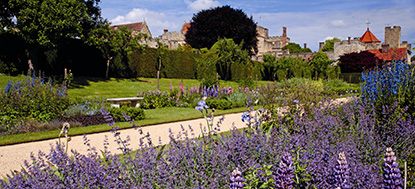
Jubilee Walk
In 2012 Penshurst unveiled the new design of a 72 metre double herbaceous border, planted to a design by George Carter, a Gold Medal winner at RHS Chelsea Flower Show. The design incorporates traditional and modern elements to stunning effect and was officially opened by RHS President Elizabeth Banks and named the Jubilee Walk.
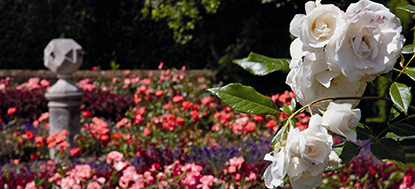
Rose Garden
This Garden provides bands of colour with its bed of pink roses. Surrounded by Berberis thunbergii 'Atropurpurea Nana' hedges and two long beds of white standard roses under-planted with the soft grey leaves of Stachys lanata 'Silver Carpet'.
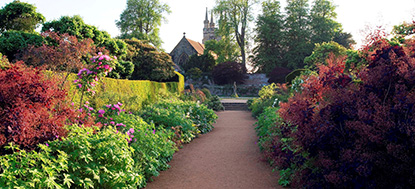
Lanning Roper Border
Known as the Lanning Roper by its American-born designer, the double border contains mixed planting. Developed in 1970, it provides the perfect vista to the West with Penshurst Church and to the East through a peephole - typical of a Lanning Roper Design.
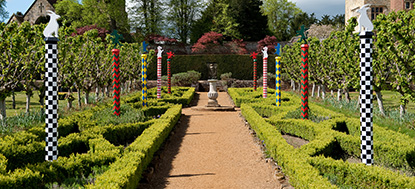
Heraldic Garden
The brightly coloured painted poles are the focus of the Heraldic Garden and are all topped with heraldic beasts, symbols of the Sidney family and their connections. Muted tones come from various lavender and sage varieties to create a tapestry effect in the Parterre.
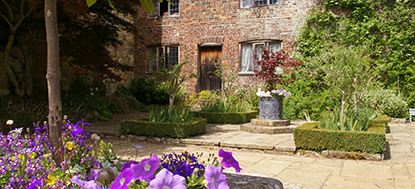
Paved Garden
The Paved Garden contains a small pond, impressive stone planters and three venerable standard wisteria.
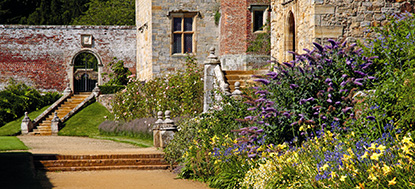
Blue & Yellow Border
This border runs up to the Garden Tower and Italian Garden. It was designed using the colours of the Sidney family coat of arms. Having undergone restoration in 2013, a new planting scheme has been introduced and contains a specially bred Iris 'Penshurst Blue' and Iris 'Penshurst Yellow'.
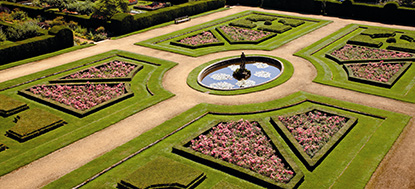
Italian Garden
Opening directly in front of the House, the 16th-century Italian Garden is designed to be enjoyed from the State Rooms. The colossal project of Sir Henry Sidney in the 1560s, it is the centrepiece of the Garden and sets the style for the whole, with an oval lily pool and classical statue at its centre.

South Lawn
The pattern of small Gardens starts at the South East of the estate opening up from the South Lawn. The entrance to the House is situated on the South Lawn, where beds are planted with Lavandula 'Vera' and roses, 'Tall Story'.
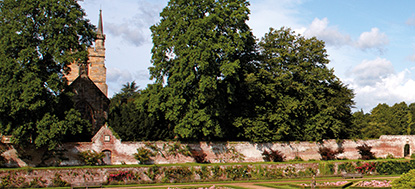
Church Terrace
Catch a glimpse of the other Gardens from this elevated terrace. The Acer's are under-planted with a variety of spring bulbs and inter-planted with mixed climbing and rambling roses.
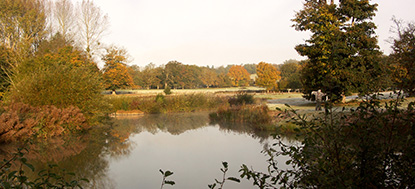
Arboretum & Trout Lakes
Walking to the Arboretum you will pass the Trout Lakes where Penshurst Park Trout Fishery have exclusive access to coarse fishing. Along with the invertebrates which live in the Trout Lakes, the Arboretum provides a vital food source for many of our local wild birds and contains a collection of tree species native to England. Planted in 1992 to commemorate the life of 1st Viscount De L'Isle, VC, KG, father of the current owner, each section is surrounded by mixed hedgerows and the whole area is a riot of colour in the autumn.
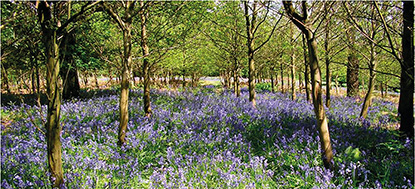
Woodland Trail
Located in the middle of the Arboretum, our Woodland Trail provides a managed woodland environment for visitors to Penshurst Place to enjoy. With display panels highlighting key areas of interest, the trail is designed to stimulate a visitor's awareness of the countryside environment, its plants and animals and the need to protect their habitat.

